Wooden Anchor Stock Core (09A15)
This lead object was recovered from Fort Bovisand in Plymouth after spending many years under the stairs leading to the bar along with many other objects recovered from the waters around Plymouth. The object is trapezoidal in section, 620mm long, 65mm at its widest point and weighs 26kg. A notch in the centre of the upper side is half round in section with a radius of 25mm. Recently it was identified as the lead core from the stock of a wooden anchor from the classical period, see sketch below.
This core would be one of a set that were cast within a wooden anchor stock to add weight, one or more on each side of the shank, called Type IIa anchors using Haldane's typology. The cores were cast into trapezoidal moulds carved out of a solid wooden stock, with the bottom of the mould wider than the top so the core could not fall out. The half round notch in the upper side was probably formed around a wooden tenon fitted across the stock. Lead was poured in to the mould, flowed around and over the tenon then over the top of the mould itself. The 'cap' of lead that formed on the top of the mould is visible but has been folded flat against the side of the core. The core is covered in marine growth and where visible the lead appears pitted and corroded.
This core is the same design but much smaller in size to the cores reported as Anchor No. 3 by Kapitan in 1978, those were 70 and 80 kg in weight. Four sets of such cores were recovered from the classical Greek (5th C BCE) shipwreck at Tektas Burnu as reported by Trethewy: 'The Type IIa anchors represent the earliest departure from the use of stone in anchor construction when lead technology became available for this application'. This technology predates the solid lead stock known as Type III.
The origin of this lead core is unknown and as yet no one has been found who can identify where it was recovered from.
A number of lead ingots were recovered by divers from the sea around Fort Bovisand many years ago. It has been reported that at least 13 lead ingots were recovered and were placed under the stairs in the lobby of the Fort where this core was found. The ingots were removed from under the stairs after a few were stolen and their current location is unknown.
The stock core was transferred to the Plymouth City Museum on 7th May 2010 and has accession number AR.2010.155.
![]() If you have any more information about these finds then please contact us.
If you have any more information about these finds then please contact us.
Images
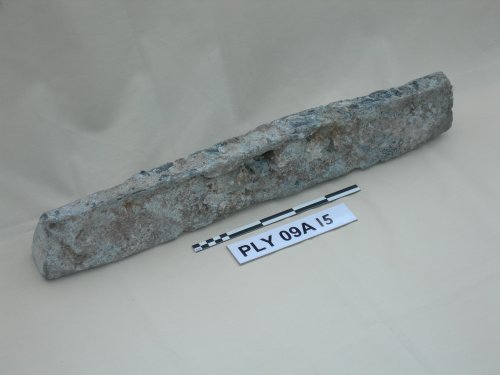 |
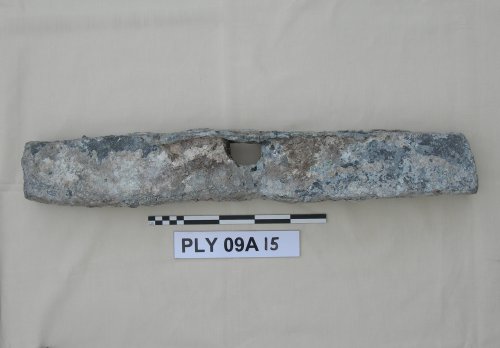 |
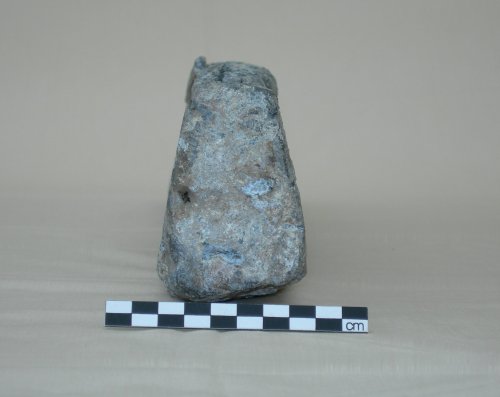 |
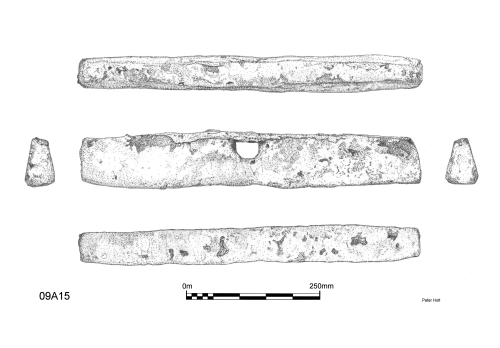 |
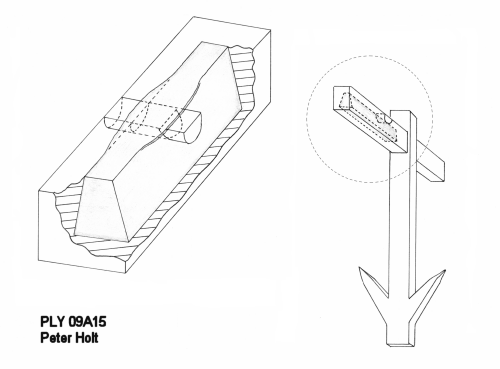 |
References
Kapitan G., 1978, Exploration at Cape Graziano, Filicudi, Aeoloian islands, 1977, IJNA 7.4, 269-277
Trethewy K., 2001, Lead anchor-stock cores from Tektas Burnu, Turkey, IJNA 30.1: 109-114
Curryer B., 1999, Anchors, an Illustrated History, Chatham Publishing, London, ISBN 1 86176 080 9
